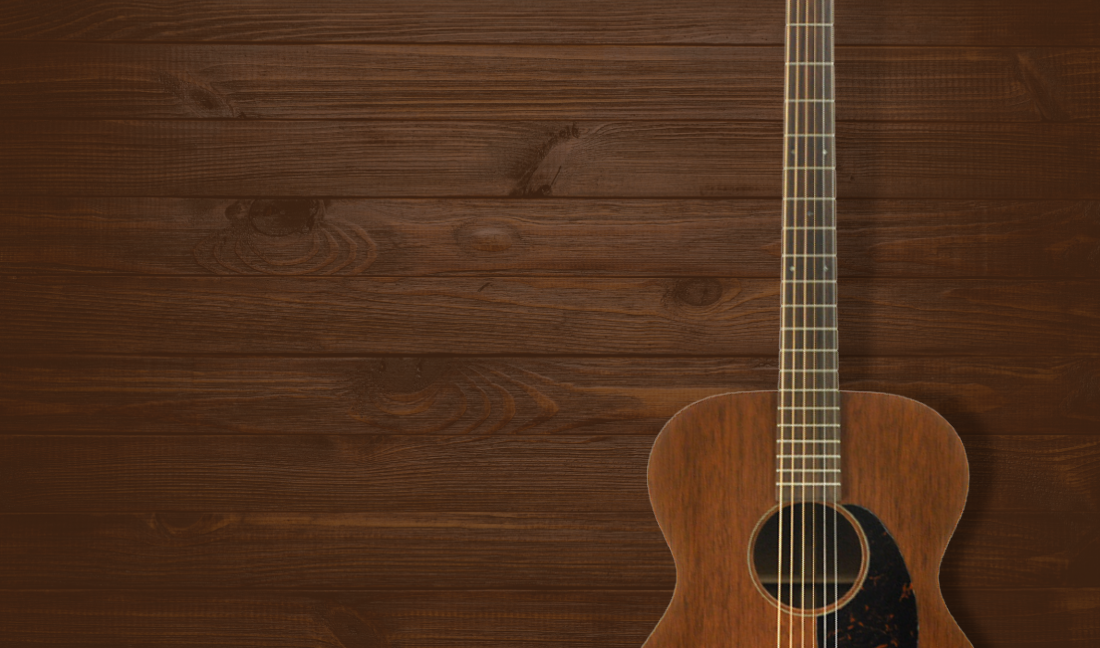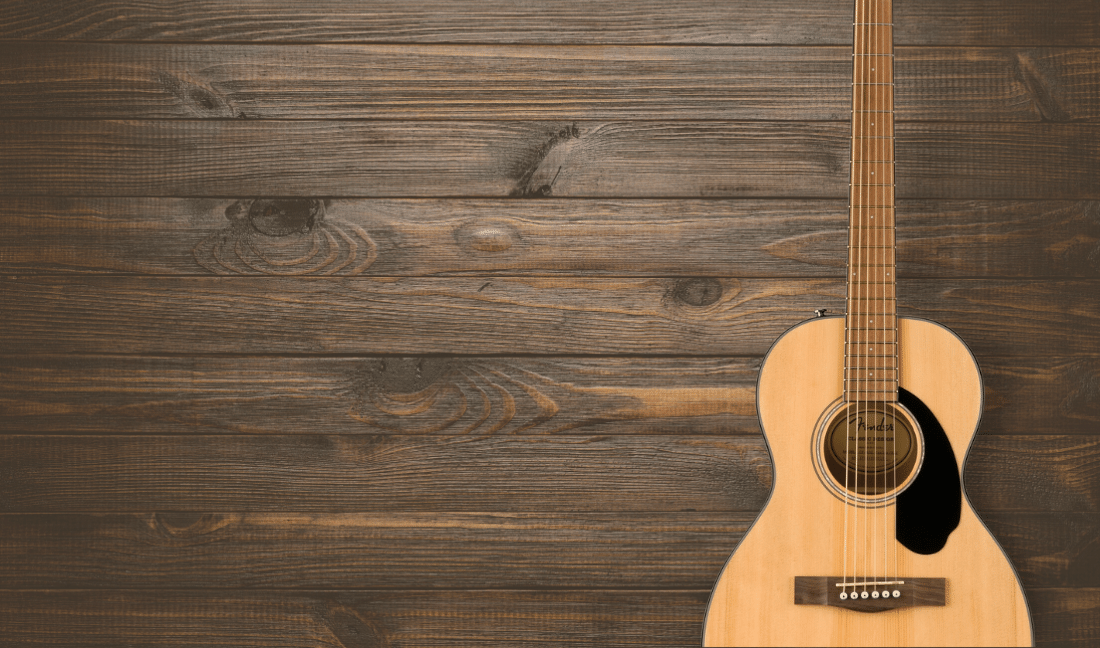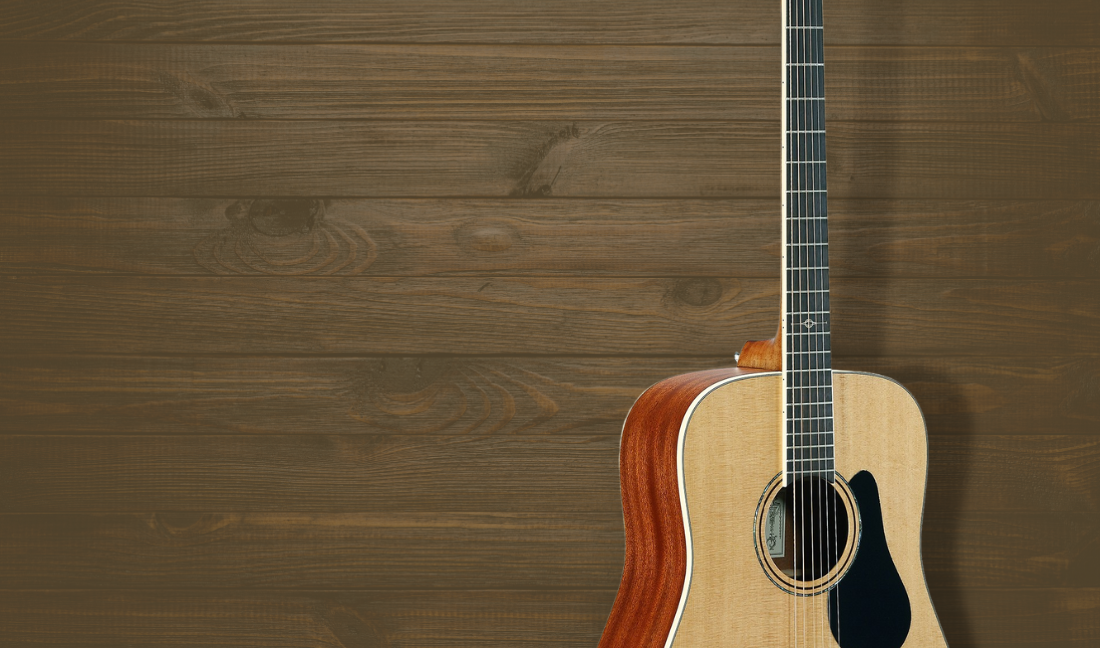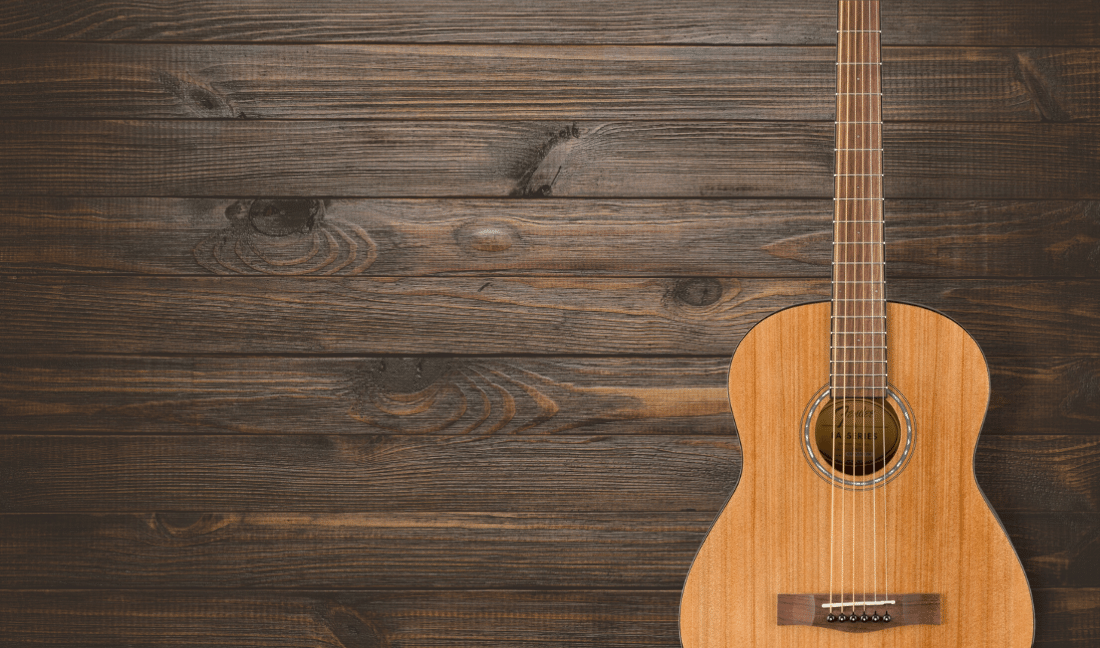The Martin 000-15M is a great choice for those who want an acoustic guitar that sounds great and is built to last.
It has a non-cutaway body with a top made of mahogany, back and sides made of mahogany, satin body finish, a mahogany neck with a adjustable truss rod, and chrome hardware plating.
You can purchase this guitar in many different stores, some of them include:
We may earn commissions from these links at no additional cost to you
The focus of this post will be on taking an in-depth look at the Martin 000-15M acoustic guitar and examining its features, sound, and playability.
We’ll also explain each of these features and how they affect the overall sound and playability of the instrument.
Table of Contents
Summary
Here’s a general summary of the Martin 000-15M so that you can take a glance at how it performs.
The score and rating is just our own opinion, so it might be different from what you or others think.
Hardware
The various metal and plastic components that make up a guitar are collectively referred to as the guitar’s hardware.
These include but are not limited to:
- Tuning machines
- Pickguard
- Bridge
- Strings
- Strap buttons
- Pickups
- Tailpiece
- Control knobs
The phrase “hardware” is commonly associated with electric guitars, however it may also refer to acoustic guitars.
When selecting a guitar based on its hardware, ensure that it is of excellent quality and will be able to endure regular usage.
Guitars of lower quality sometimes have plastic saddles on the bridge, which makes it harder to tune the instrument and affects the tone and intonation.
You should also make sure that the metal pieces are resistant to corrosion and tarnishing, and that they appear to be solid and durable without being readily damaged.
A well-sounding and playable guitar needs good hardware, and there are a few things that a manufacturer can do to make it ideal for us.
Let’s take a closer look!
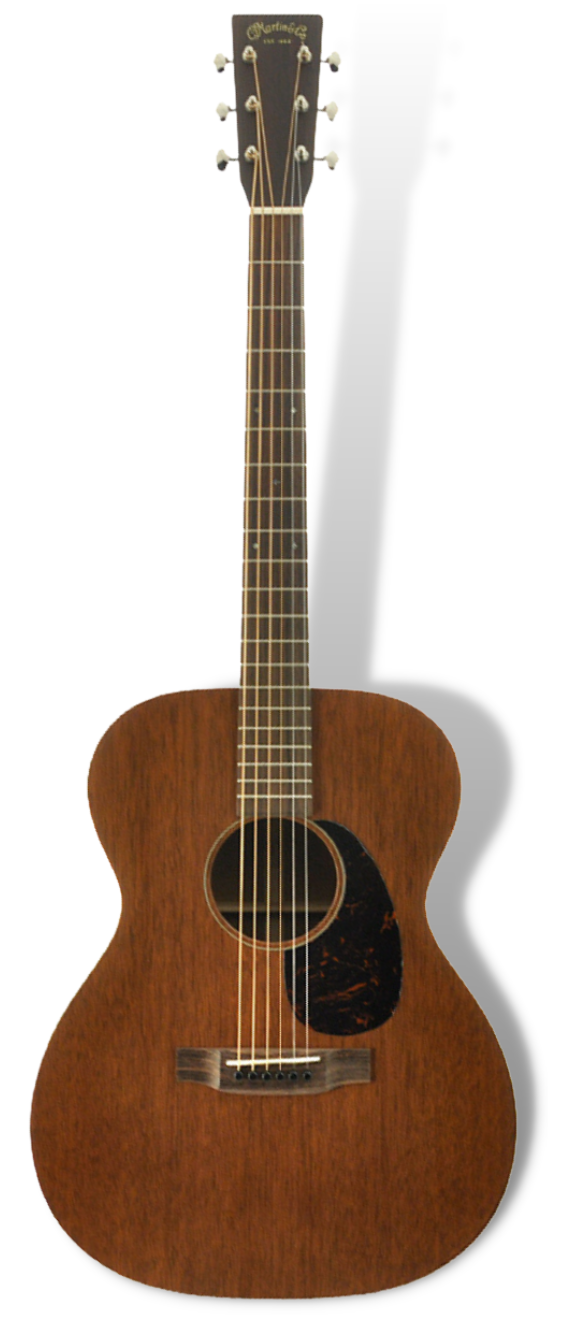
– Tuning Machines
On this Martin 000-15M, the tuning machines are die cast, made of nickel, and have a open gear design.
- Material: Nickel
- Design: Open gear
One of the most significant aspects of any guitar’s hardware is the tuning machines (or “tuners”).
They’re in charge of keeping the strings tight so they can vibrate properly and generate the desired pitch.
Poor-quality tuning machines can lead your guitar to quickly fall out of tune and be difficult to tune.
They can also make it difficult to change the strings, and make the guitar generally more difficult to play.
Must Remember:
Good tuning machines are made of strong and durable materials and have a precise and smooth action.
You’d want to look for materials such as nickel-plated steel, or stainless steel, which are less likely to rust.
These materials are also less likely to tarnish, which will extend the life of your instrument.
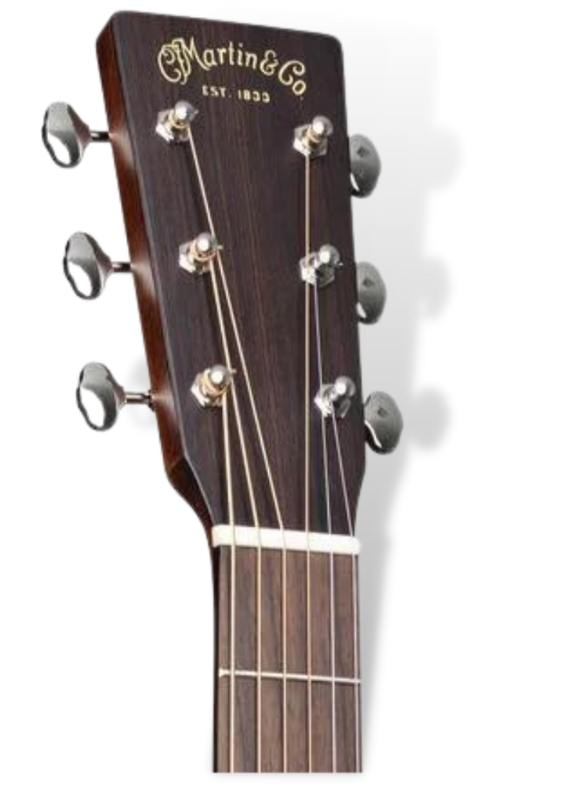
– Pickguard
The Martin 000-15M comes with a black pickguard with a red tortoise design.
- Color: Black
- Design: Red tortoise
The pickguard is a little piece of plastic or metal attached near the strings on the guitar’s body.
Its aim is to keep the pick from scratching the guitar’s finish while you’re playing.
Most pickguards are made of either plastic or metal, and nowadays maybe even carbon fiber, and there are a few different designs that you’ll come across.
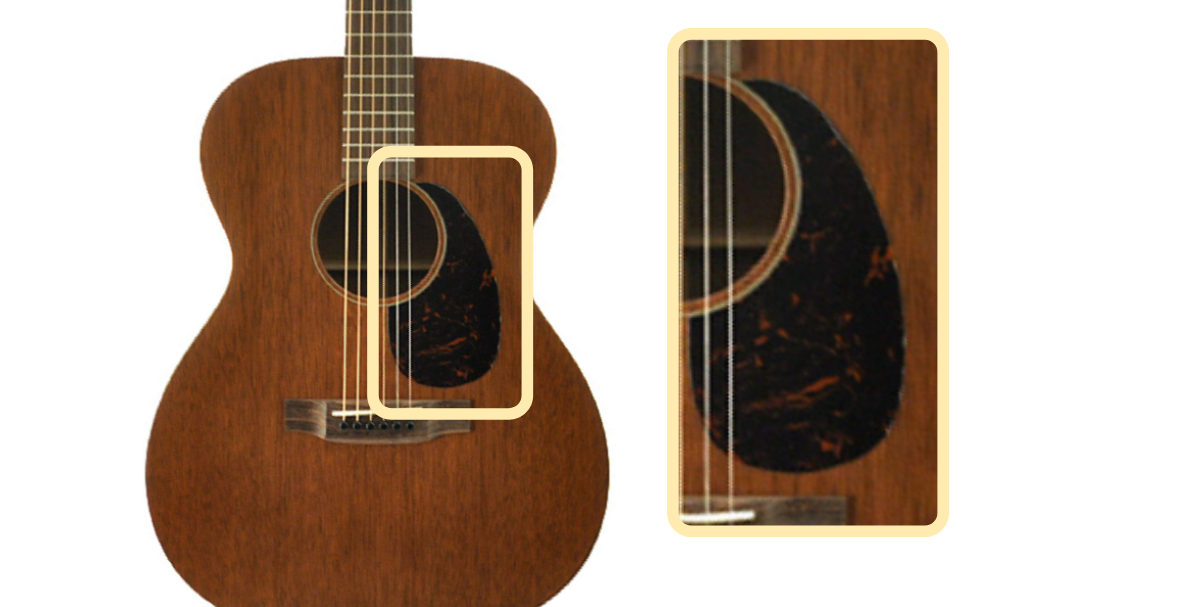
When choosing a pickguard, it is important to consider both its durability and its ability to protect the guitar body from scratches.
It also needs to be big enough and in the right spot to actually protect the guitar body from being scratched by the player’s pick.
As for aesthetics and looks, the pickguard should also complement the overall look of the guitar.
It shouldn’t be too noticeable, but it shouldn’t also be so small or low-quality that it looks out of place.
– Strap Buttons
For some reason, the Martin 000-15M only comes with one strap button, so you’d have to install the second one if you want.
- Material: Chrome
- Position: Bottom
- Design: Classic
Strap buttons are little metal buttons on the guitar’s body that are used to connect a strap to the instrument.
One on either side of the body, most guitars will generally feature two strap buttons.
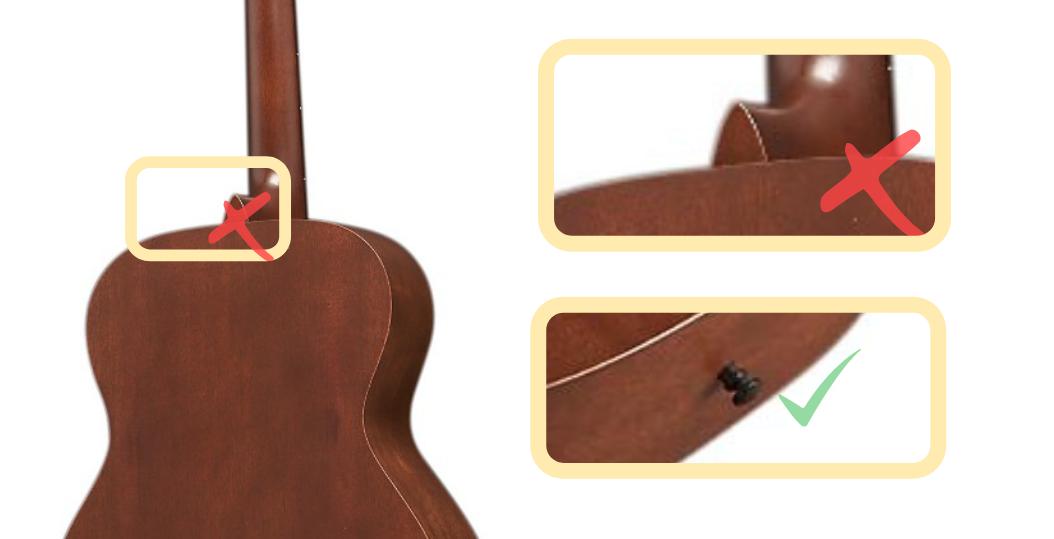
Metal strap buttons should be solid and strong to avoid coming loose over time.
Even though the quality of the strap buttons isn’t a deal-breaker for the majority of folks, it’s still something to consider.
Body
The neck, bridge, and strings are all linked to the guitar’s body.
It also has a hole in it (the “soundhole”) which allows sound to resonate from the inside of the instrument.
The majority of guitars have a wooden body, although others have carbon fiber, metal, or plastic bodies (less usual).
– Wood
If you’re seeking for a specific tone, you must take in mind the sort of wood utilized for the body of the guitar.
When it comes to the Martin 000-15M, it has a mahogany top with a mahogany back and mahogany sides.
– Finish
The guitar’s body finish is the last layer of protection for the wood.
When it comes to this guitar in specific, it features a satin finish.
It’s what gives the guitar its brilliance and shine, but also protects the wood from scratches, dents, and other damages.
There are different types of finishes to choose from, including the following:
- Polyurethane
- Nitrocellulose Lacquer
- Polyester
Nitrocellulose Lacquer is considered to be the best type of finish, but it’s also the most expensive.
It’s a durable finish that can be buffed to a high shine, and it’s also relatively easy to repair if it’s damaged.
Polyurethane is a cheaper alternative that’s almost as good, and Polyester is the cheapest option but it doesn’t provide as much protection.
Among these categories, there are subcategories as well, such as:
- Gloss finishes: High shine and they’re very reflective.
- Matte finishes: Have a lower shine and they’re not very reflective.
- Satin finishes: Somewhere in-between gloss and matte, they have a moderate shine and they’re somewhat reflective.
– Colors Available
The color of a guitar’s body is never an important factor on its overall sound.
It can, however, affect the instrument’s appearance and feel.
Some people prefer a guitar that’s a certain color because it matches their style, or because it’s easier to see in low light conditions.
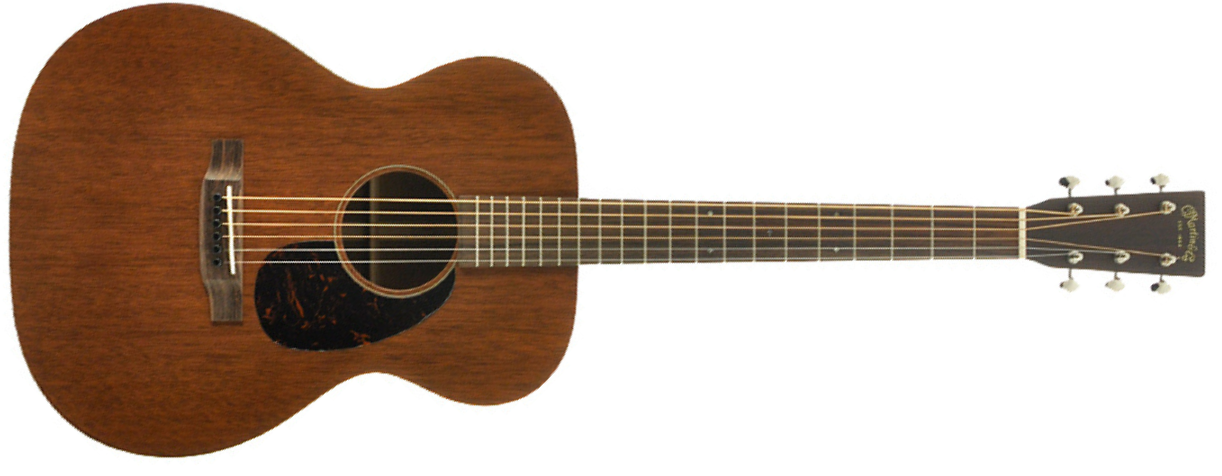
Some of the most popular colors for guitar bodies are:
- Natural: This is the color of wood that hasn’t been stained or painted.
- Black: Black is a popular color for metal-style guitars.
- Sunburst: Sunburst is a combination of light and dark colors, usually red, yellow, and brown.
– Bridge, Saddle, and Pins
The Martin 000-15M has a standard pin bridge with black-colored ebony pins and a saddle made of compensated bone.
Each of these elements contributes to the tone and feel of the guitar.
For example, the bridge is responsible for transferring string vibrations to the guitar’s body.
The saddle, which is often composed of plastic or bone, is where the strings rest.
And the pins are what hold the strings in place.

There are also several kinds of bridges, each with its own set of pro’s and cons.
The three most common styles of bridges on acoustic guitars are:
- Pin bridges (standard)
- Pinless bridges
- Classical bridge
Pin bridges are the most prominent type of bridge and the simplest to rebuild and replace.
However, they can be a bit more difficult to intonate, which means getting the strings in the correct position.
Pinless bridges are bit less common, although they are easy to intonate as well.
They also have the advantage of not requiring any pins, which can be a pain to keep track of.
Lastly, classical guitar bridges are only used on classical guitars.
They are similar in design to most other bridges, but the key distinction is that they have no pins and instead consist of a saddle and a wooden block with a hole for each string.
Said hole is used to tie the string down, which gives the guitar a much cleaner look.
Now, the type of saddle you choose is also important; plastic saddles are the cheapest and easiest to find, but they don’t last as long as bone saddles.
Bone saddles are more expensive, but they’re also more durable.
As for the bridge pins, there are three main types:
- Plastic bridge pins
- Steel bridge pins
- Brass bridge pins
Plastic bridge pins are the cheapest and easiest to find, but they’re also the least durable.
Steel bridge pins are more expensive, but they’re also more durable.
Brass bridge pins are the most expensive, but they’re also the most durable.
Neck
The Martin 000-15M has a neck that’s made of mahogany with a Modified Low Oval shape and an adjustable truss rod.
The neck is the long, thin component of the guitar that runs from the body to the headstock and is generally made of wood.
The type of wood that’s used for the neck can affect the guitar’s playability and sound since different woods have different properties and impact the way that the vibrations produced by the strings behave.
The most popular style of neck is the bolt-on neck, which is screwed or bolted onto the body of the guitar.
Another popular style is the set-neck, which is actually glued to the body of the guitar.
The fretboard, frets, nut, and truss rod are some of the most critical components of a guitar neck.
Fretboard
The fretboard is the part of the guitar’s neck where your fingers make contact and press against the strings.
It’s usually made of wood, but it can also be made of other materials like plastic or even metal.
The Martin 000-15M has a fretboard made of east indian rosewood with abalone inlays:

Even though this has always been a big debate, it is generally agreed that the type of wood that’s used for the fretboard can slightly affect the sound of the guitar.
Maple, for example, is a popular wood for electric guitars because it produces a very bright tone.
Rosewood is another popular choice, and it is frequently used on acoustic guitars because it produces a warm, full-bodied tone.
Ebony is yet another popular choice, and it’s often used on guitars that are meant to have a really clean, clear sound.
There are several types of fretboards available, each with its own set of pros and cons.
The type of fretboard you choose is ultimately up to you and what you’re looking for in a guitar, the tone of the guitar won’t be significantly different, but the feel of the guitar will be.

Brand Info
Martin is one of the world’s leading guitar brands, and they’ve been in business since 1833.
They’re known for their high-quality acoustic guitars, but they also make electric guitars, basses, and other stringed instruments.
Martin guitars are used by some of the most famous musicians in the world.
The company offers a wide range of different models to suit every budget and every playing style and is a great choice for both beginners and experienced players alike.
In terms of quality, Martin is definitely up there with the best of them, they use only the finest materials and craftsmanship to produce their instruments.
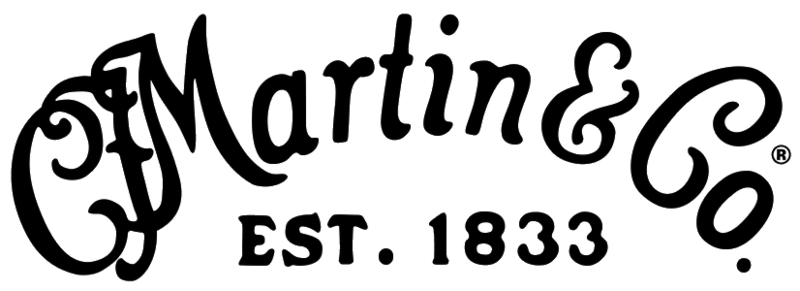
Videos
For those of you who want to get a more in-depth look at this guitar, we’ve included some videos below.
The first video is a demo showing off how it sounds and looks.
While the second video is a review that goes over some of its features and specs.
Demo
Review
Specifications
A guitar’s specifications can tell you a lot about the instrument, and they can be helpful when you’re trying to decide between different models.
Below, we’ve included the specifications for the Martin 000-15M:
– General
| Brand | Martin |
| Model | 000-15M |
| Type | Acoustic |
| Size | Full Size |
| Colors | Natural |
| Number of Strings | 6 |
| Hardware Plating | Chrome |
| Tuning Machines | Die Cast |
| Electro-acoustic | No |
| Built-in Tuner | Not applicable |
– Body
| Body Style | Auditorium |
| Cutaway | No |
| Solid Top | Yes |
| Top Material | Mahogany |
| Back Material | Mahogany |
| Sides Material | Mahogany |
| Finish Type | Satin |
| Pickguard | Yes |
| Pickguard Design | Red tortoise |
| Strap Buttons | Yes |
| Strap Buttons Position | Bottom |
| Strap Buttons Design | Classic |
– Neck
| Neck Material | Mahogany |
| Neck Shape | Modified Low Oval |
| Scale Length | 25.4″ |
| Truss Rod | Adjustable |
– Fretboard
| Fretboard Material | East Indian Rosewood |
| Fingerboard Inlay | Abalone |
| Number of Frets | 20 |
– Bridge, nut, saddle, pins
| Bridge Design | Standard pin bridge |
| Pin Color | Black |
| Pin Material | Ebony |
| Bridge Material | East Indian Rosewood |
| Saddle Material | Compensated Bone |
| Nut Material | Bone |
| Nut Width | 1.6875″ |
Please note that some brands might change the type of materials that they use on their guitars.
This can be because of new regulations and laws that come and go throughout the years.
If you see a mistake in any of these specifications, please let us know and we’ll correct it.
You can reach out to us via our email: [email protected]
I also encourage you to check out our other guitar reviews if you’re looking for something specific that you might have not found here with this guitar.
There are a lot of great guitars out there, and it can be tough to choose the right one sometimes.
We have reviews on electric guitars, acoustic guitars, bass guitars, effects pedals, and more.
No matter what your budget is, or what type of guitar you’re looking for, we should be able to help you find the perfect one for you.

More than 10 years of experience playing and writing about guitars! When not writing, I can be found strumming away some Johnny Cash tunes. Favorite all time guitar is the Gibson Les Paul. #TeamGibson

